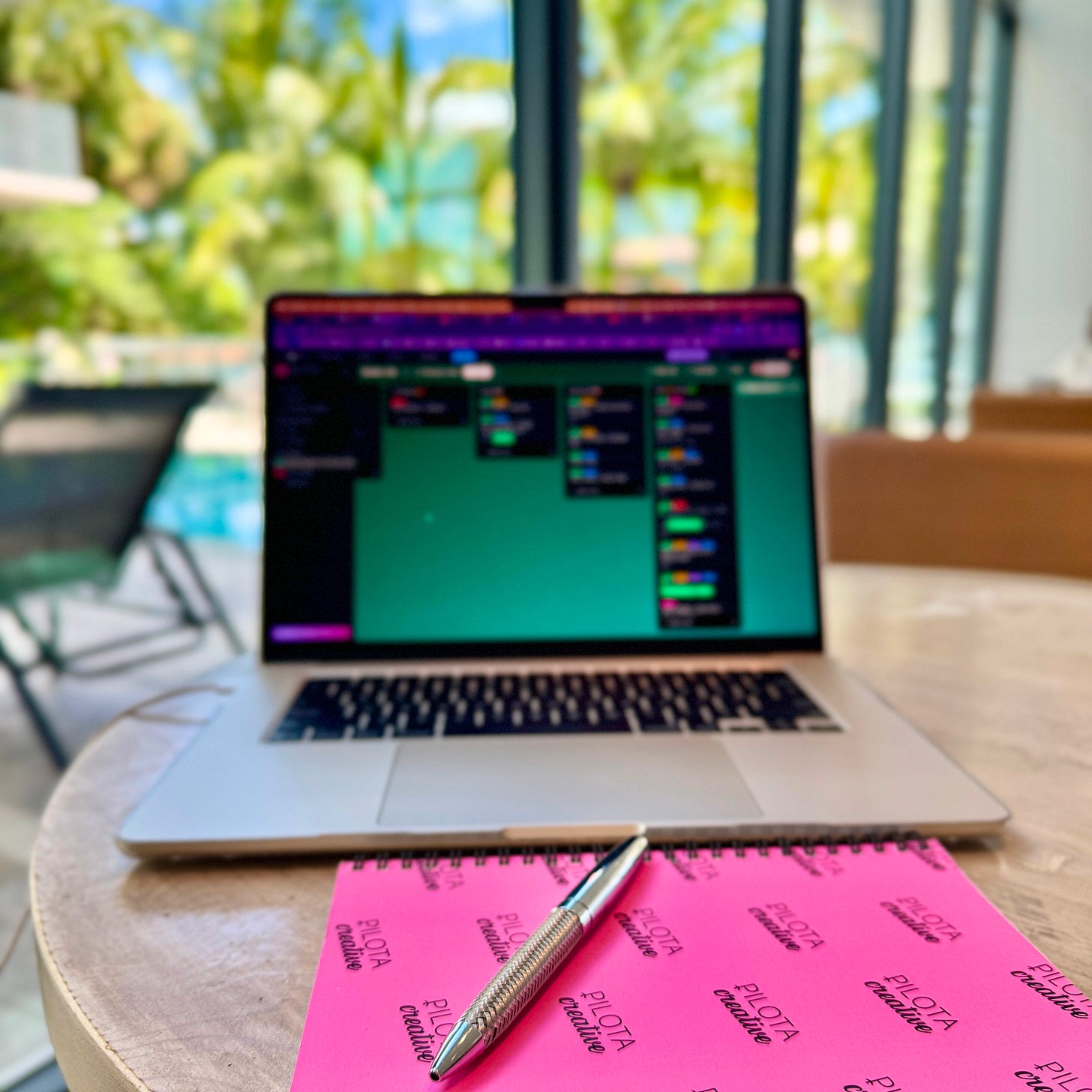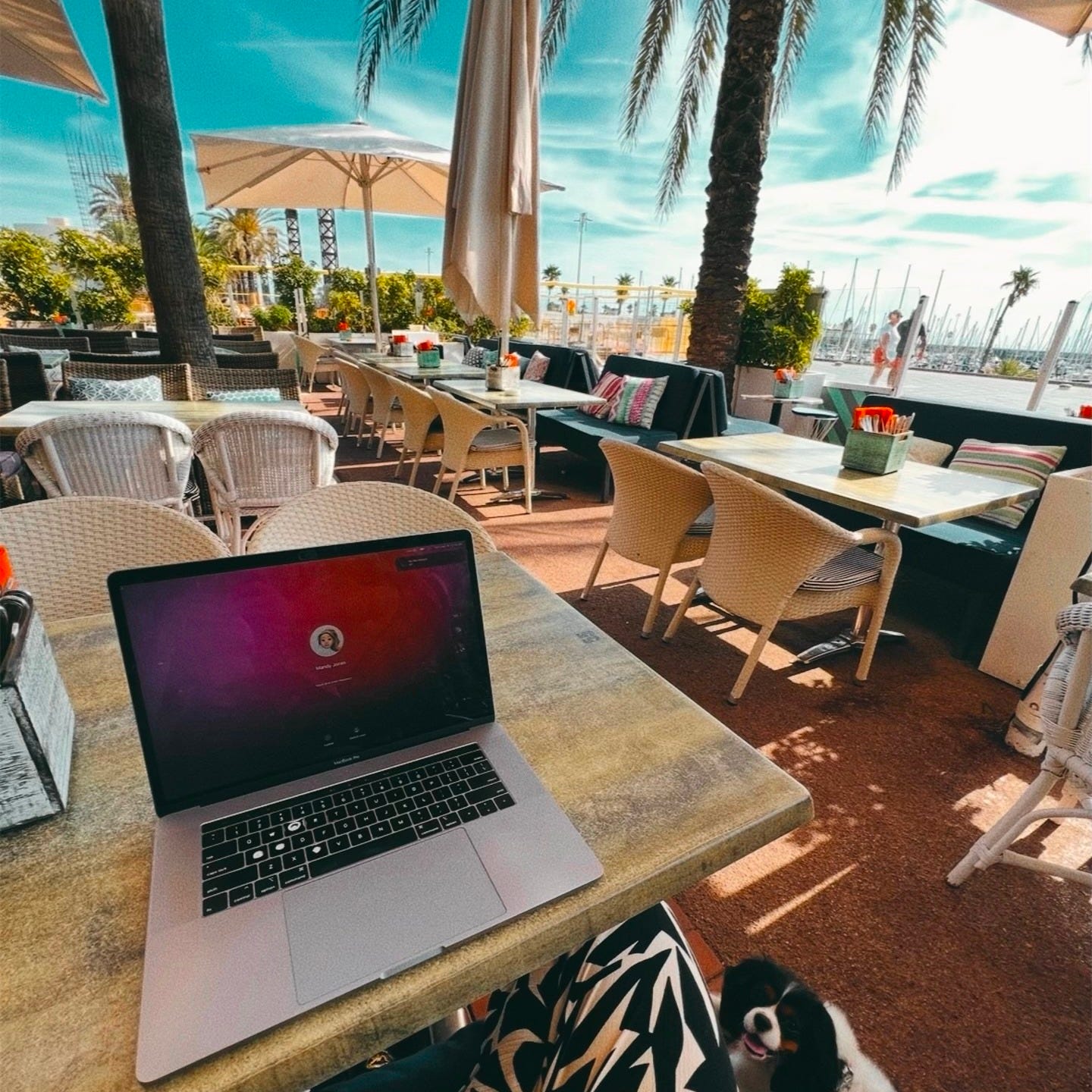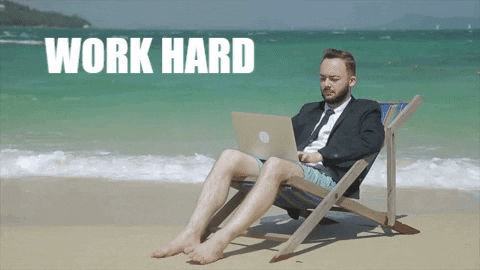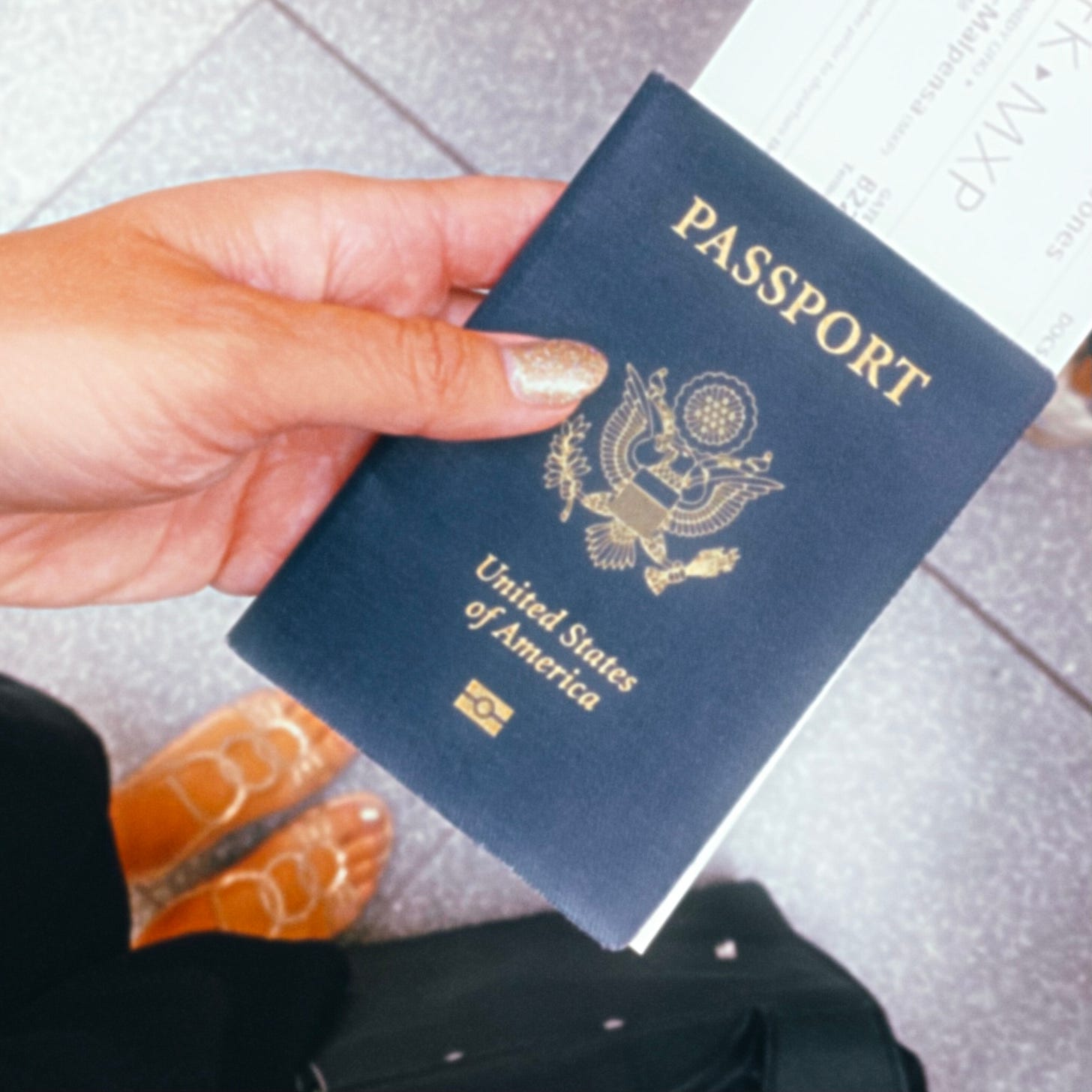Nomad Fatigue: From Everywhere to Nowhere
On burnout, optics, and purposeful travel
When I first became a digital nomad in 2016, it wasn’t because I dreamed of working from beach cafés—who in their right mind actually wants to spend hours squinting at a sun-battered laptop, propped on a wobbly table, with no charging outlet and sand flying everywhere?
Not me.
It also wasn’t about collecting passport stamps—I’d already visited something like 70 countries by then.
The truth is, it was out of necessity.
In fact, it was the only way to maintain an international relationship with someone whose country wouldn’t let me stay longer than a few months at a time. Being a nomad was, quite simply, a means to an end.
I’ll admit: I’m a long-time traveler and explorer by nature, so it wasn’t exactly a chore. And after a lifetime of following authors and speakers who challenged the status quo—plus being a bit of a rebel myself—there was a certain thrill that came with doing something different.
But it felt more like the joyful exhale of freedom than it did a haughty status symbol. My goal was never to look cooler or feel better than someone else, though I’ve certainly been accused of it.
I just wanted to live—at least, in a way that felt authentic to me.
Building a life online
It wasn’t an easy transition, but within a year I’d gone from working odd location-based jobs to making a living fully online. I probably took a few too many risks and certainly sacrificed any sense of security, but I also gained countless new skills and rich life experiences.
In the years that followed, I mixed in a few remote roles alongside freelance projects and my own business-building efforts, saying “yes” to things I had no idea how to do (and teaching myself). After a lot of discomfort and many failures, I managed to carve out a modest living.
I was proud of that. For a while, I reveled in the novelty of working from anywhere—no doubt annoying my family and friends with constant reminders of my newfound freedom.
Back then, it still felt rare and intentional, like belonging to a small, scrappy club of people designing life on our own terms. But the magic began to fade as the lifestyle became more saturated.
Remote goes mainstream
When the COVID-19 pandemic hit, things changed practically overnight. Suddenly, nearly everyone I knew was working from home and living pretty much the same way I was—just without the constant change in scenery.
Two things happened at once: Remote work became the norm, and demand for remote jobs exploded, leaving companies scrambling to keep up. At the same time, after months of lockdowns and restricted movement, a lot of people were restless, fed up, and hungry for change.
It became harder to tell which roles were remote by design and which were begrudging pandemic stopgaps. On the outside, they looked the same, but beneath the surface, there were completely different motivations.
This blurred the line between intentional nomadism and a mass movement chasing a postcard image of freedom.
Once restrictions were lifted, this newly remote workforce was free to move, and the nomad lifestyle exploded—fueled by a variety of new digital nomad visas and an influx of long-term travelers sharing the same cafés, co-working spaces, and neighborhoods as established nomads.
It was no longer just a subculture.
When trends take over
This was a seismic shift—one that took a niche lifestyle and, like most trends, completely diluted it.
Don’t get it twisted: I’m not complaining about others having the same freedom I’ve been fortunate to enjoy. I’ll champion meaningful remote work all day (emphasis on meaningful) because the more people using their skills and passions to do good in the world, the better.
But somewhere along the way, the energy changed. I started to notice the same scene at cafés in every city that I went: rows of open MacBooks, noise-cancelling headphones, oat milk lattes (guilty!), and minimalist backpacks.
The captions practically write themselves:
living the dream 😎
my office for the day 🌴
it could be worse 😉
On one hand, I was glad to see more people expanding their horizons and enjoying life in new ways. On the other, it was a bit strange that something once rooted in personal freedom now had a recognizable uniform.
Meetups and events once buzzing with entrepreneurs and seasoned travelers started to feel more like summer camp for well-funded gap-year kids. I’d show up hoping to form real, lasting connections, only to leave drained by the surface-level frenzy of elitist backstories, performative tech jargon, and “living the dream” one-upmanship.
Even my favorite co-working spaces had morphed into do-nothing happy hour hubs. Forget productivity.
All of this was amplified by the online chatter:
“Digital nomads are out of touch.”
“Café culture is ruined.”
“They’re driving up AirBnB prices.”
“All they do is take up space and complain about the wifi.”
”Nomads, go home!”
Somewhere in the middle of all that noise, my travels had shifted from necessity to lifestyle choice, and I had to ask myself: Why am I doing this? Am I living this way because it’s truly me, or because it looks good from the outside?
Where’s the line between working, truly living, and Instagramming it all into oblivion?
Authentic origins vs. optics
Many trends don’t start as trends. They start as solutions.
For me, the nomad life began as a visa workaround. For many, it was an escape—from draining jobs, stifling cities, or routines that felt like slow suffocation.
For myself and the early nomads I knew, the draw wasn’t the aesthetics, but the benefits: freedom, flexibility, and the chance to design a life around what mattered most. The aesthetics—photos with palm trees, laptops by the sea, picturesque old town streets—were just a nice little bonus for enduring all the difficulties: visa limits, endless housing searches, unreliable internet, and constant goodbyes.
The early days of any movement tend to be filled with this kind of raw intention. People aren’t thinking about optics; they’re too busy actually living.
But in today’s social media culture, optics eventually take over. It gets harder to tell whether someone’s doing something for personal meaning or for how it will look online. The more something photographs well, the more it’s repeated—until the image starts to replace the experience itself.
Once performance becomes the point, purpose begins to fade.
The lifestyle gets a name, a hashtag, and eventually a collective caricature that flattens all of the nuance, the meaning, and the struggle into a single meme-ready stereotype.
Optics vs. reality
When the goal becomes proving you’re “living the dream”, you risk spending more time performing freedom than actually feeling it. Nowhere was this more obvious to me than in one of the world’s most Instagrammed nomad hubs: Barcelona.
After living there for several years, I decided to leave. Too many shallow encounters with transient, uncommitted people, ever-growing crowds, and an endless carousel of predictable and unfulfilling meetup conversations left my days blurring together until it felt like I was living the same one on repeat.
The city itself never lost its magic: the architecture, the art, the music, the calming seaside, the colorful energy. I’d built a life full of beauty, creativity, and moments I’ll always treasure. Who knows: I might end up back there someday.
But within the nomad community, it was hard to find what I was looking for. Most people seemed to be passing through, stopping for a few months or stretching a short stay and filling their days with sightseeing and cocktail parties. It wasn’t that they were unfriendly, but the pace and priorities rarely left room for the kind of meaningful connections I craved.
The rising anti-nomad and anti-tourist sentiment didn’t help, either; even with an apartment lease in my name, I still felt like an outsider. And the community that was supposed to be a lifeline began to feel like part of the problem.
The rinse-and-repeat rhythm of the nomadic life created a constant state of transition that kept me rebuilding my life from scratch, adapting instead of rooting, and never really staying long enough to feel truly at home.
When you’re always moving, everywhere starts to feel like nowhere.
That’s when I knew it wasn’t just a phase of restlessness, it was full-blown nomad fatigue. And if I wanted to keep traveling (and feeling good about it), something had to change.
Purposeful travel: Why you go (or stay) matters
Travel will always be a part of who I am, but it means the most when it’s rooted in purpose.
There are two sides to purposeful travel:
External: The relationships you build, the communities you connect with, and the depth of belonging you find in each place.
Internal: Your own presence, intention, and the way you engage with the moment—whether you’re truly experiencing it or simply curating it for others to see.
Both matter. Without the external, travel can become isolating; without the internal, it can become hollow. Together, they’re what turn movement into meaning.
I’ve never traveled for the optics, but as an artistic person who loves taking photos, I’ve always enjoyed documenting my experiences (and still do). For me, the camera is less about proving anything to anyone, and more about noticing, preserving, and celebrating the details that inspire me.
Over time, though, I’ve become more aware of the fine line between documenting and performing. I never want the record to become more important than the reality.
I hope all of us get to experience that joyful exhale of freedom, and I also hope that we’re able to protect our souls from the noise, the sameness, and the ever-growing pull toward living for an image. That means checking in with ourselves to be sure we’re traveling for the right reasons: not for consumption or content, but for meaning.
The world isn’t an all-you-can-eat buffet; it’s a treasure to explore with intention.
And if everywhere starts to feel like nowhere, the answer isn’t a shinier “anywhere.” It’s discovering—and sometimes rediscovering—the places and reasons that make you want to stay.








